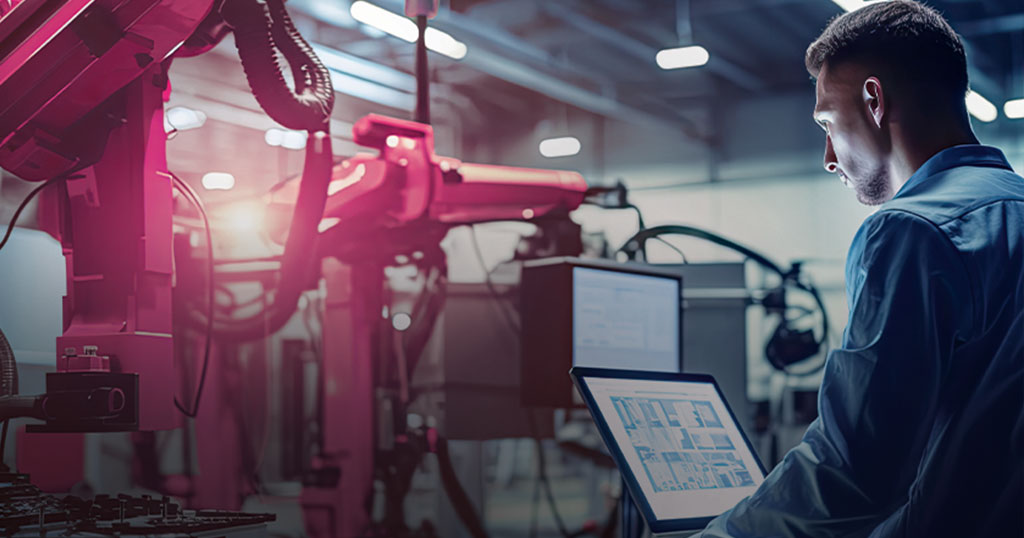The benefits of a strong service offering
Service is an anchor of stability in the machinery and plant engineering sector during times of global crises. After-sales revenues are less susceptible to external developments and economic fluctuations compared to new plant business. Additionally, their higher profit margins stabilize companies’ cash flows and mitigate risks. Moreover, an attractive service offering provides a clear competitive advantage in global markets.
According to McKinsey, customers can expect a longer product lifespan from manufacturers with corresponding maintenance contracts since no one knows the equipment better than the manufacturers themselves. Regular after-sales touchpoints deepen customer relationships and offer recurring sales opportunities, making it easier for machinery and plant manufacturers to understand their customers’ problems and resolve them with the appropriate service offerings.
The 2020 Customer Service Benchmark by the German Mechanical Engineering Industry Association (VDMA) shows that many companies in the machinery and plant engineering sector have recognized these opportunities and are expanding their services. While at the time of the last major VDMA study on this topic four years ago, only about 61% of companies offered maintenance contracts and generated around 20% of their revenue from services, an increase in these values can be expected in the next survey.
This places us in the midst of a market development that will accelerate in the coming years. Technological progress also contributes to this: the Industrial Internet of Things (IIoT) allows service business to be optimized on a customer-specific basis using data from the product’s operation.
In the future, it will become more important but also easier for machinery and plant manufacturers to increase the maturity level of their service. The following maturity model helps you assess where your company stands on the road to service excellence.
A Maturity Model for Service
Companies with low service maturity handle customer inquiries exclusively reactively. Such processes take a long time because they are still partly processed with paper forms, and searching for the required information is a tedious routine activity that does not generate value. If inquiries via email or phone are not digitally collected, this complicates the structured and prompt processing of service cases. In the worst scenario, inquiries get lost in email inboxes or remain unprocessed during an employee’s vacation because no one has insight into the current status of communication.
Digital Service Management
Digitalizing service processes is the first step to increasing internal efficiency. Companies can use a CMS (Customer Service Management) tool to manage delivered products. Services are planned and documented digitally, resulting in a service logbook for each customer and asset. Incoming customer inquiries via email or telephone are automatically converted into tickets internally and then systematically processed.
Only once service processes can be handled efficiently is it worth building up the after-sales volume. Therefore, the digitalization of internal processes is the basis for the transition from reactive to proactive service business. For example, by offering standardized service contracts with regular maintenance for sold equipment.
Connectivity & Automation
The next step for machinery and plant manufacturers is to develop their products into smart products that transmit selected operating data. In the past, there were concerns about the feasibility of this approach because providing this data depends on the customer giving his consent. However, more and more plant operators are now willing to do so. McKinsey has validated this trend in a survey and identified two significant factors:
- B2C customer experiences lead to increased expectations for service experiences
- Positive experiences with IoT-based remote services during COVID-19
Plant operators are generally motivated to share information with the manufacturer when the added value is tangible, for example, in the form of cheaper maintenance contracts and the promise of higher availability. Manufacturers can achieve this by using operating data to introduce usage-based maintenance strategies instead of following calendar-based maintenance cycles. This results in fewer services per plant and reduces overall costs. Furthermore, software can detect suspicious patterns in operating data early on and automatically initiate preventive measures based on rules.
Customer Integration
Companies with high service maturity integrate their customers into their business processes via a customer portal. Such a portal is the centerpiece of a modern service experience and strengthens customer loyalty. It enables customers to view their purchased products along with their operating data and the service logbook for each asset. An overview of past and planned services provides planning security and streamlines scheduling between the manufacturer and operator. A ticket system allows customers to submit new requests, track their processing status, and respond to corresponding inquiries directly in the system without the need for a service employee to answer phone calls and manually convert them into tickets. Additional services such as spare parts orders or trainings can also be requested through the customer portal, which streamlines and accelerates the sales process.
Conclusion
A strong service business has positive effects on cash flow, minimizes entrepreneurial risks, and simultaneously strengthens customer experience. How this is best achieved depends on the current situation in customer service, the company’s products, and the offering of the competitors and is unique for each company. Blueprints such as the maturity model described here provide guidance and enable a quick assessment of how excellent service can be realized step by step with the technologies available on the market.
CONTACT Elements for IoT helps your team effortlessly manage the increasing number of customer inquiries while enhancing the efficiency of your service department.




